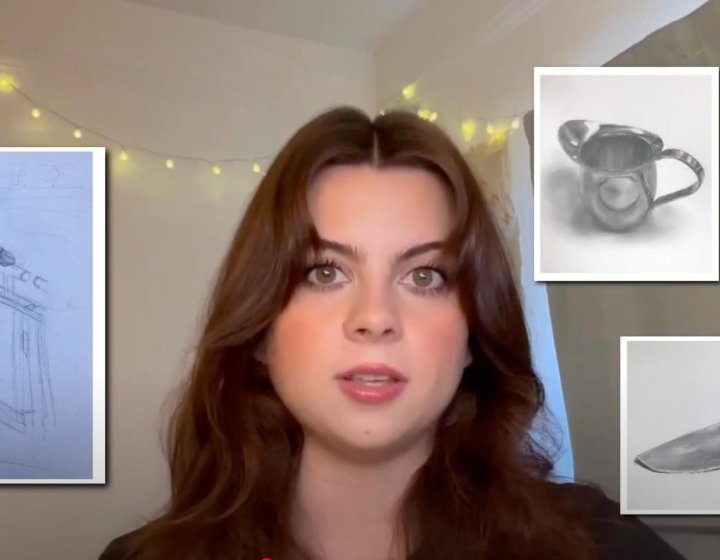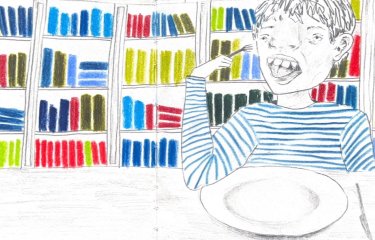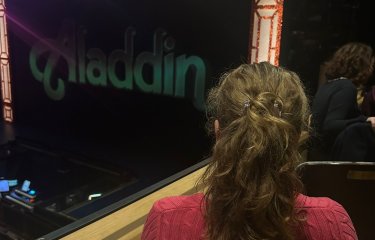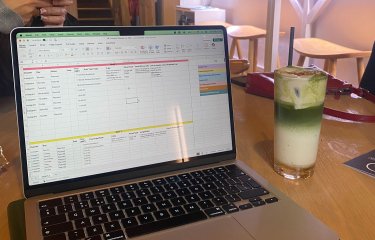The ultimate guide to building your university portfolio
Portfolio advice from our students
Our Student Ambassadors have created these videos to help you prepare your university portfolio.
In this three-part series, you'll discover what a university portfolio is and what it should include. If you're attending an online interview, there's also helpful video about how to upload a digital portfolio.
According to Google, a portfolio is a large, thin, flat case full of blue sheets of paper such as drawings or maps but what is it really?
A portfolio is a way of showcasing your best work and selling yourself through the work you've created. Within a university portfolio, there are usually 15-20 images, drawings, paintings and written work too depending on the work you do and the course that you're applying for.
In a survey answered by Falmouth University students, portfolios are seen to be just as important as interviews when applying for university. So don't think that they're a waste of time. In fact, portfolios can be used for many different things; not only can they be used for getting you into university and getting a job but they're great for putting on your social media and website, showing clients examples of your best work and your unique style.
University portfolios can be presented in many different ways. You can display your work in an art folder, sketchbook, portfolio box, photo book or on a laptop.
Art folders
Art folders are useful when presenting large drawings and paintings - usually A3 or A2 in size. Some are transparent and others aren't but they should all be waterproof to protect the work inside. They have a handle or strap so you can easily transport your work with you when going to an interview. if you've done art and design courses at college or sixth form you might be familiar with the style of a sketchbook for presenting work. Usually a sketchbook will consist of your images accompanied by any captions, written reflection or analysis, and any other works such as a photographer or artist research, contact sheets, sketches and idea development.
Portfolio box
A portfolio box is great for prints or drawings usually A3 size or smaller. This is easy to carry under your arm but isn't always waterproof so make sure you have something to cover it when it rains. You'll most likely need a portfolio box when you submit any photographic work at university and it's a great place to store any prints when you're not using them for anything.
Photo book
Photo books are also a great way of culminating your best work and is suited more towards photographic courses.
Website
Websites such as Blurb can help you create a design that best shows off your images. If you're unable to print any of your images, you can present your portfolio via a laptop so long as it's not password protected so academics can access your work as easily as possible.
You should include specific work for your university portfolio depending on the type of course and submission; whether that be online or in person.
Applicants applying to Fine Art, Drawing and Illustration courses will need to present drawings, sketches, any 3D work, sketchbooks or journal work and any notes on visits to galleries and exhibitions.
Applicants applying to courses in the Institute of Photography should submit photographic techniques, visual research, written research, photographic essays and sketchbooks showing idea development.
Applicant applying for Film and Television courses can submit any scripts, storyboards, show reels, photography, written work and research.
Architecture, Product Design and Interiors courses will require CAD renders, 3D models or sculptures, a range of design processes, finished pieces and images of spaces and places that inspire you.
Applicants applying to Game Art, Game Animation or Robotics should show any creative computer work, 2D or 3D composites, CGI or CAD, along with any computer games, thought processes and ideas.
Applicants applying to Advertising and Graphic Design should present any observational drawings, design processes, projects that show a brief to a final outcome, visual research, sketchbooks and journals.
Fashion and Textiles applicants should submit fashion illustrations and drawings, textiles, prints and weave, fashion photography, visual research techniques and processes, finished pieces and final outcomes, and any sketchbooks or journals
Animation and Visual Effects courses will require storyboards and film stills, show reels, preliminary sketches, observational drawings, photography, paintings, sculptures and journals.
An applicant applying to an AMATA course, such as Creative Music Technology, will need to show any compositions, remixes and recordings.
There are various methods that you can use to create and upload an online portfolio so it can be viewed by academics and employers anywhere in the world.
Make sure that you back up work on multiple hard drives to reduce the risk of losing anything. Create multiple folders on your hard drives and computer that are clearly labelled.
Here are some websites that will help you display your university portfolio:
- Art Station is great for digital artists, illustrations, animation, game art and game animation.
- Flickr is good for fine art drawing paintings and photography
- Behance can be used for illustrations, drawings, advertising and graphic design, product design and interiors, architecture and animation.
See what our students included in their portfolios

My accepted fashion portfolio for university
05 March 2025
In this video, Lillian takes us through her accepted portfolio for university.

My accepted graphic design portfolio for university
29 January 2025
In this video, Matt shares his advice on how to create a successful graphic design portfolio.

My accepted art portfolio for university
28 January 2025
In this video, student Jessie gives a walk through of her accepted art portfolio.





